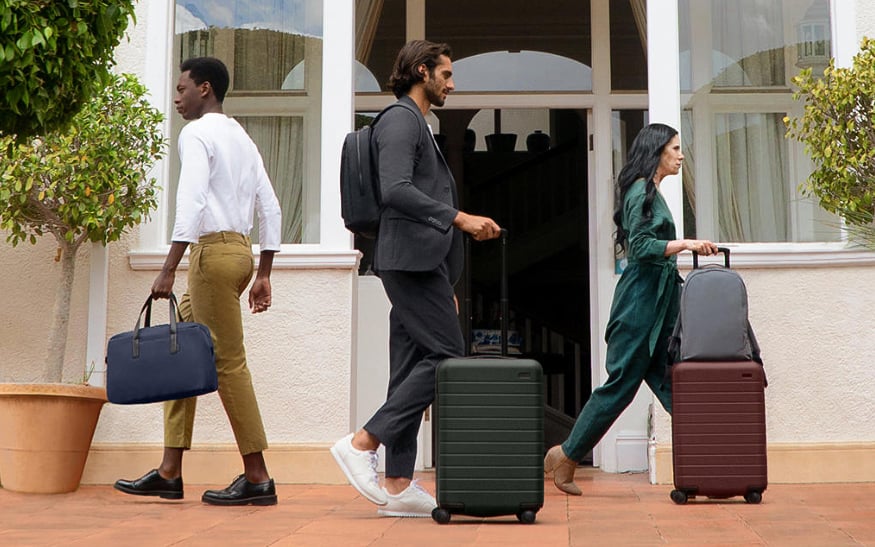
You can learn a lot by studying the businesses that break the mold of traditional retail. Although your own brand might not be one of the “retail unicorns” that have grown into billion-dollar businesses, you can still borrow a thing or two from the businesses that faced an uphill battle—and won.
Today’s retailers face a lot of pressure to innovate, but that doesn’t mean you have to reinvent the wheel. Here are five inspiring brands that may offer some retail lessons you can bring to your own business.
1. Casper
Casper is well-known for its aggressive DTC business model in what was once considered a boring category. But the company continues to raise the bar of customer expectations by offering a distinctive mattress shopping experience.
In addition to retail partnerships that now place some of its products at Target and other department stores, the company operates a number of brick-and-mortar locations that offer an innovative in-store experience.
The company’s stores feature “nap showrooms” that feature unique floor plans, beautiful sleeping spaces, and an experiential selling strategy that encourages shoppers to test-drive mattresses by taking a nap in a tranquil, cozy space. This is a stark difference from the typical approach of laying out bare mattresses on a large, open sales floor.
By offering bathrobes, ear plugs, makeup wipes, and other amenities, Casper offers a comfortable, pampering experience that has changed how mattress shopping is done.
2. Brideside
The traditional market for bridesmaid dresses has been heavily dependent on physical store locations to facilitate try-ons and fittings for these premium dresses. But Brideside focuses its investments on hiring expert stylists who can provide advice and recommendations in a number of different settings.
Brideside can host shoppers in a traditional studio setting, or it can provide a virtual in-home consultation for bridal parties that can’t visit a store. Swatches can be ordered and delivered to a customer’s home, and sample dresses are available for at-home try-ons.
Though the company does maintain some showroom locations, Brideside has built its business through at-home services that will help brides find the perfect dress for their bridesmaids.
3. Warby Parker
The company is known for its stylish frames, but Warby Parker changed the optical landscape by getting rid of the in-store labs used by LensCrafters and other legacy eyewear brands. Instead, Warby Parker redesigned its retail spaces to deliver a better showroom experience and more style options.
By taking the lab component out of the physical store, Warby Parker also ensured that online and in-store customers receive a similar retail experience. Though services like in-store prescription checks are still offered, their popular Home Try-On and Virtual Try-On services make it easy for customers to get a feel for their frames before placing their order.
4. Sephora
Despite nearly 50 years in the business, Sephora has embraced new cosmetic shopping technology that gives its customers an almost futuristic shopping experience.
The company’s mobile app uses augmented reality to let customers try makeup on virtually before making a purchase, providing an at-home alternative to visiting one of the brand’s many global physical stores. Customers can sample a much wider array of makeup because no makeup is actually being applied to the skin. The intelligent app can also make color recommendations based on your skin tone.
This type of proprietary innovation may not be within reach for many smaller retailers, but the creative approach to trying out products may spark some inspiration as you brainstorm new ways of creating valuable experiences for your customers.
5. Away
The DNA of Away’s DTC model comes directly from Warby Parker, where the company’s founders worked before breaking away to start their own luggage-focused retail company.
The company now offers a range of products that might be packed into luggage as it seeks to become a go-to destination for travel supplies. It has experimented with retail partnerships and pop-up locations to expand its product reach, including a pop-up shop installation inside of a Nordstrom.
Part of the company’s success is due to its foundation of strong community-building through influencers and social activity. Customer feedback and other first-party data are used to make changes to products and marketing strategy.
All of these retail unicorns have one thing in common: They saw a pain point in the traditional customer experience, and they came up with a solution to that problem.
Your business is capable of the same creative problem-solving! It all starts with listening to your customers and understanding how the status quo is letting them down. Want to learn more about how you can improve your brand’s customer experience? Get in touch with our team here.


